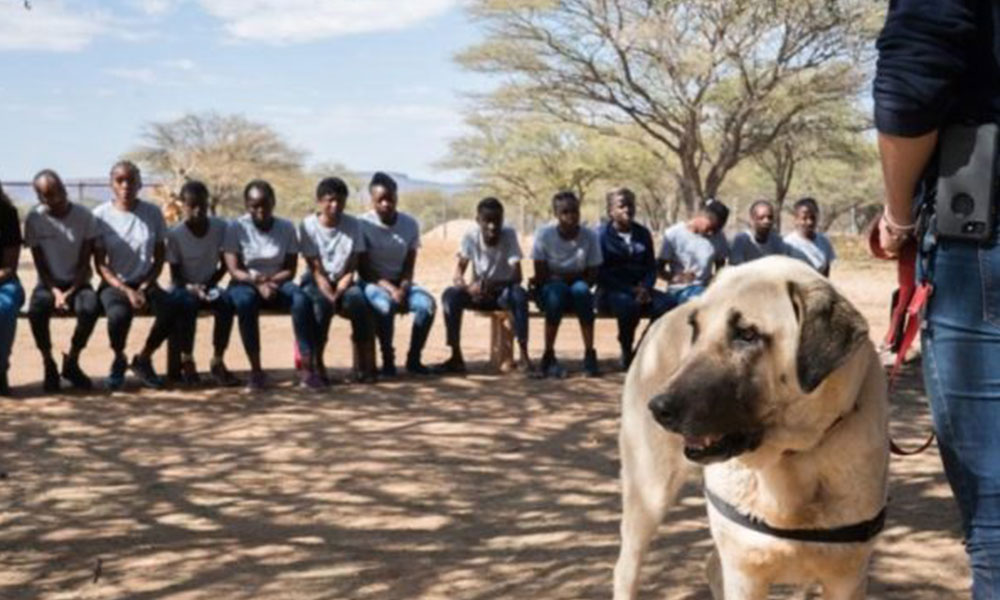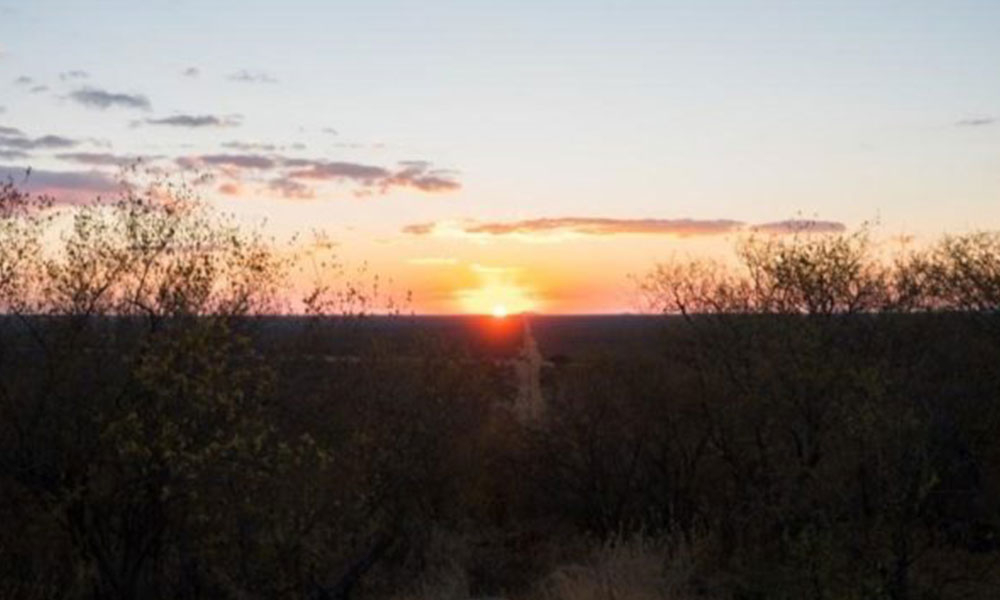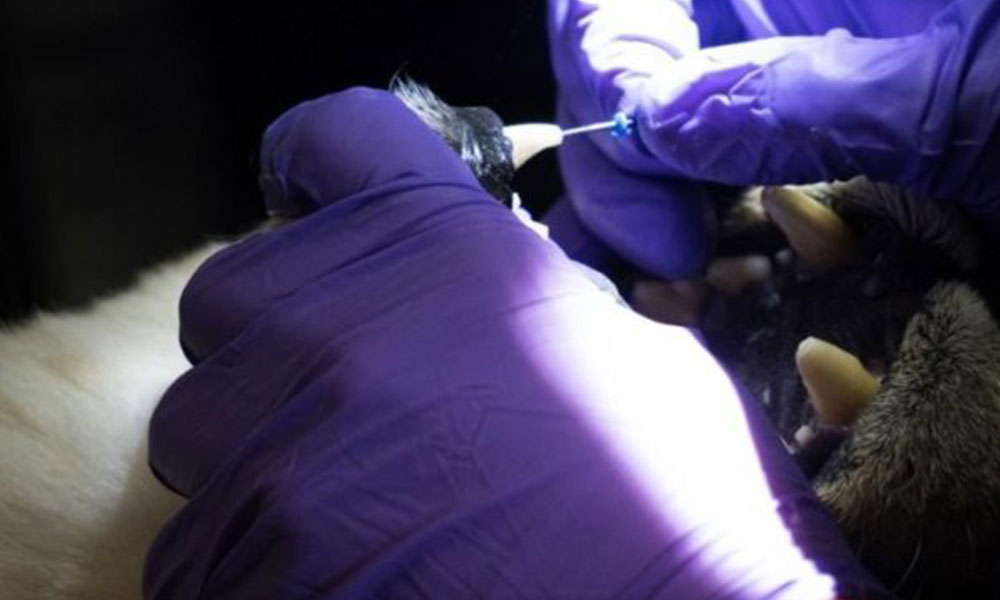The Story of My Internship at the Cheetah Conservation Fund
-

- by Wilson Sherman August 21, 2018

Namibia is a country in southern Africa, a vast expanse of savannah about the size of Texas, with a human population smaller than that of Los Angeles. After close to 60 hours of travel with a brief adventure/layover in Frankfurt, I landed in Windhoek – the capital city. I landed at 6:00 am local time and was welcomed by a bright red sunrise over the tarmac. It felt like the whole continent was glowing as I stepped out of the plane and onto Africa – the continent I have dreamed of visiting since I was a kid. I could hear my toy lions roaring, their silicone teeth exposed.
I was picked up by a taxi, and as soon as we left the city I could see one of the most impressive expanses of nothingness I have ever seen. Red dirt and dusty shrubbery as far as the eye can see and then for miles after that. It wasn’t long before we had to swerve to avoid a troop of baboons, lounging on the side of the road like hitchhikers. Two weeks before I had been walking across the stage of my high school graduation ceremony, and now I was thousands of miles away from everyone that I knew, zipping through the African savannah, as my driver navigated through herds of Steenbok and Duiker. Africa seemed just as huge and wild as I imagined when I used to march my plastic giraffes across the savannah of my living room carpet.
Of course, things are not as simple as I imagined they were then. I rarely played games with my plastic animals like “Climate Change” or “The Sixth Mass Extinction”.


As the human population expands exponentially like a toxic fungus, the populations of our wild animals plummet. Even in Namibia, a country with what looked to me like an endless expanse of habitat for wildlife, things aren’t perfect. Humans still struggle to coexist with native animals. In rural Namibia, livestock farmers graze their animals on habitat shared with predators like leopards, caracals, and cheetahs. When farmers perceived that these predators were a threat to their livestock, they began shooting them when they wandered onto their land. This poaching has devastated predator populations, especially the cheetah, who now occupy only 23% of their historic range due to human destruction.
This statistic is part of the reason that 45 minutes down a dirt road past the nearest town, a team of conservationists live together, working to save the cheetah. I was lucky enough to join them for five weeks, as an Intern at the Cheetah Conservation Fund – the global leader in the research and conservation of the cheetah.
The Cheetah Conservation Fund was founded in 1990 by Dr. Laurie Marker, and since then they have developed a very complete conservation strategy focusing not only on the wellbeing of wild cheetah populations, but also their ecosystems, and the people who live and work in these complex and interconnected ecosystems. The red and yellow stickers on the back of their trucks say “We can live together”.
The mission of CCF is to keep cheetahs in the wild, but the task of “saving the cheetahs” turns out to be a myriad of components, and all of these components require lots of work, and that is where the interns of CCF come into play. Every day of my internship saving cheetahs was a little different.
Some days saving the cheetahs involved doing medical checks on the goats on the model farm CCF uses to teach local farmers about the best practices for raising livestock in harmony with wild predators. Sometimes it involved taking care of the Anatolian Shepherds CCF breeds to work as livestock guarding dogs on Namibian farms, keeping livestock safe so the farmers will have no reason to shoot cheetah on their land. Sometimes it involved paperwork. Some days I got to help with the husbandry of the 40 rescued cheetahs who are either permanent residents of CCF’s sanctuary or release candidates being rehabilitated at the center. One day, saving the cheetah meant sitting by a waterhole for 12 hours, counting and recording the numbers and species of visiting game.
My favorite tasks to help out on were those that involved sharing the work that CCF is doing with people from all over the world who come to visit the center. I would give feeding presentations, and answer questions. I recognized how important this kind of work is when I had the opportunity to guide a group of Namibian high school students through CCF. I realized that this was the next generation of stewards to the Namibian wildlife, and if I could inspire some compassion for cheetahs during our tour, I could change the way they interact with their ecosystem.
In addition to helping with a variety of general tasks, interns are encouraged to contribute to CCF through individual projects based on their own interests, skillsets, and courses of study. My background in media arts and video production spurred my projects, which involved necessary photography and graphic design for the center and filming for short promotional videos. Because of this, I was able to interview some really outstanding conservationists, and also to film things like cheetah checkups and dental surgeries.


One highlight for me was regularly filming Dominic, a three-month-old cheetah that was taken from the wild when he was only a few days old. He, like so many of the cheetahs who are permanent residents at CCF, was meant for the illegal wildlife trade, but fortunately ended up in the hands of CCF, where he is being bottle fed and hand raised by the staff.
Selfishly, I enjoyed spending time with him, but being able to use my media arts skills to tell such an important story means even more to me.
If you had asked me 5 weeks ago what I wanted to be when I grew up, I would have told you that I wanted to work in wildlife conservation, but what I realized while working at CCF is that there isn’t just one job called “wildlife conservationist”. A “wildlife conservationist” can be a farmer, a dog trainer, a ranger, a chef, a hospitality manager, an ecologist, an educator, a biologist, a veterinarian, etc. Everyone has a part to play in the protection of our planet’s biodiversity, but during my time at CCF, I started to wonder… What was mine? Where do I fit into this work?
I think what I have realized is that even though I want to dedicate my life to protecting animals, my work will truly be with people. I felt most gratified when talking to guests about the cheetahs, and the ways that they can protect them, or when taking photos or creating videos that told a story – a story that matters. I think I fit into this work as an educator. I don’t know whether that is as a journalist or a filmmaker or the director of a zoo. My time at CCF helped affirm my belief that protecting wildlife was what I wanted to dedicate my life to, but it also helped me hone in on how I am going to go about that – by telling stories.
As a young kid, I would spend hours sitting with my plastic animals, telling myself stories. I can still feel the flexible rubber of the elephant’s ear, I remember it’s sturdy thumb sized legs, the expression on its face. I would talk to myself as the elephants and lions and tigers and gorillas fought and worked together and faced challenges, on my living room floor. I would spend hours like this – PJed legs crossed, powerful imagination hard at work. I also remember, a little bit later, crying because I didn’t want to grow up, I didn’t want to stop telling stories about my animals.
I realize now that even though the plastic animals are sealed in their plastic tote, stored deep in the depths of the basement, the storytelling never really stopped – it just changed forms. I think I will keep telling stories about the animals. About the cheetah, muscles and shoulder blades oscillating like waves in the ocean, feet barely flirting with the earth as they fly at 70 MPH. About the cheetah, and the antelope, and the goat, and the farmer. About the cheetah and the farmer and the people who cared enough to stop what they were doing and help them all live together.
Related Reading
-
December 3, 2023
Paws, Prints and DNA: Chronicles of a Genetics Intern -
June 15, 2023
Internship in the Ecology Department -
June 10, 2023
An Internship with Naughty Goats and Chocolates




